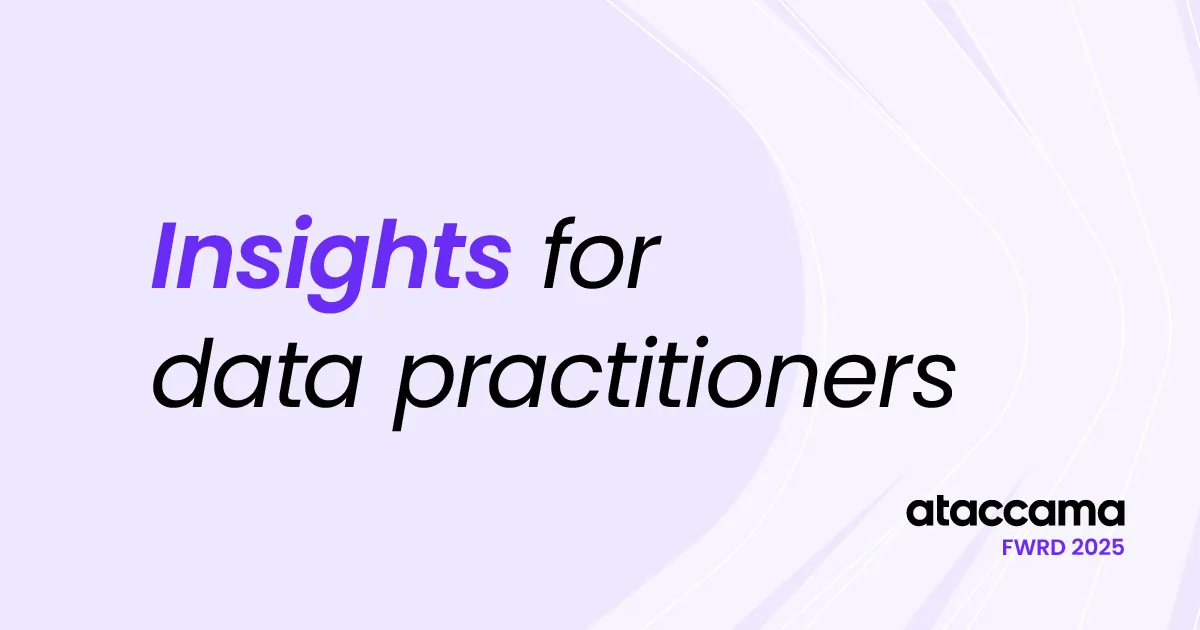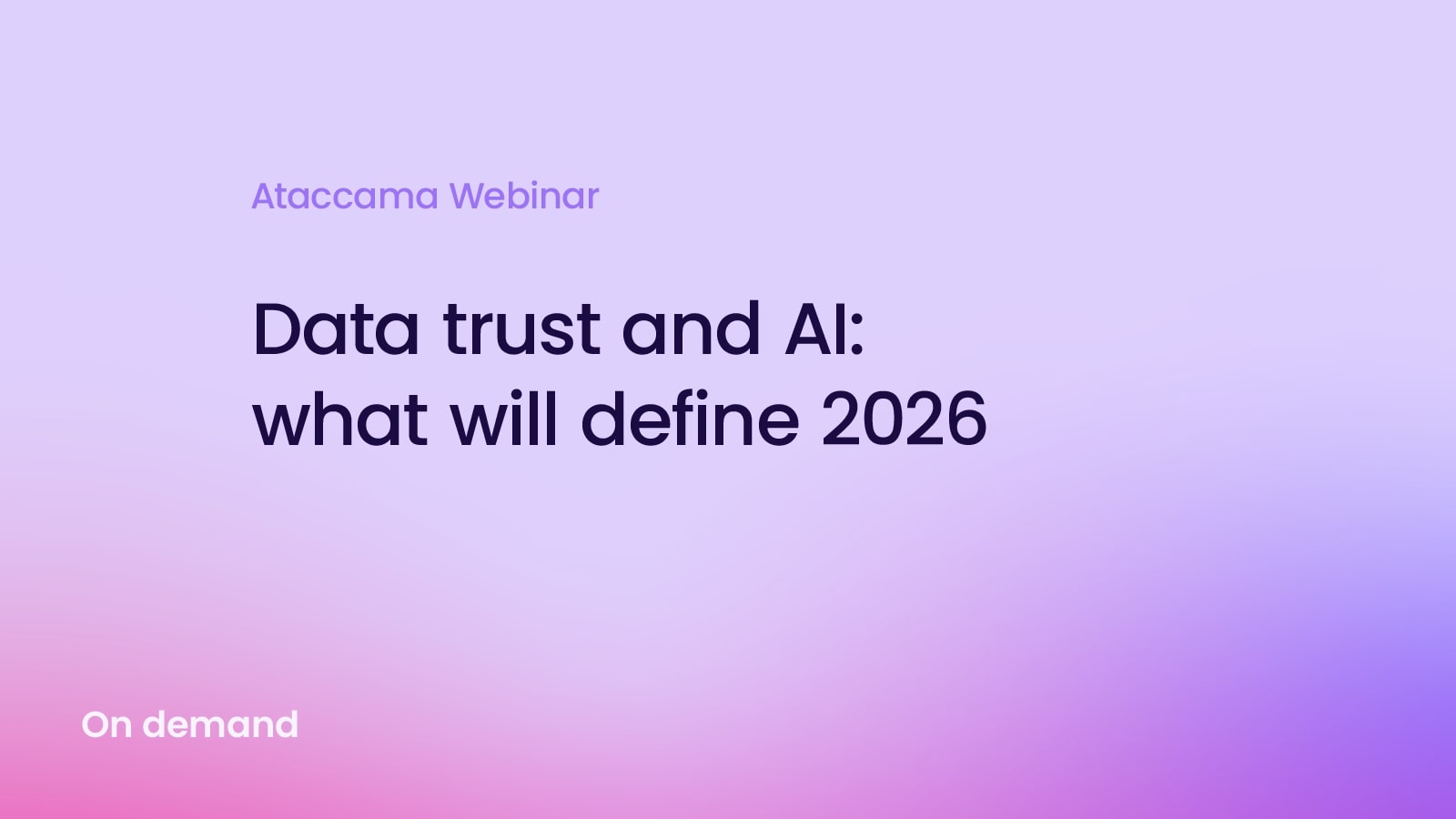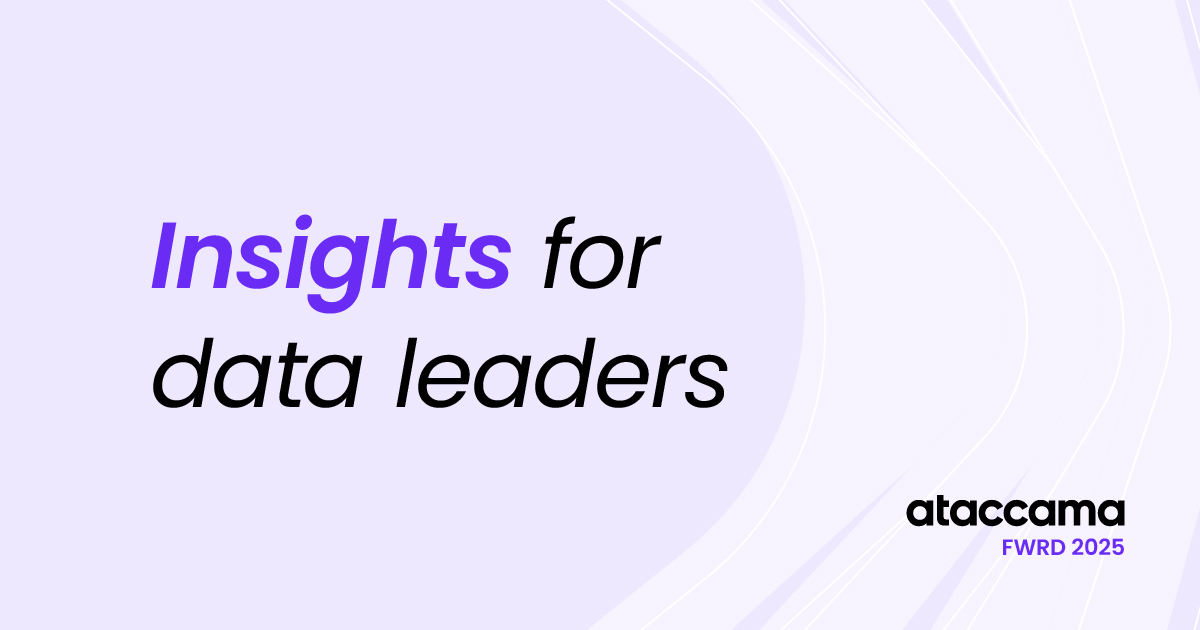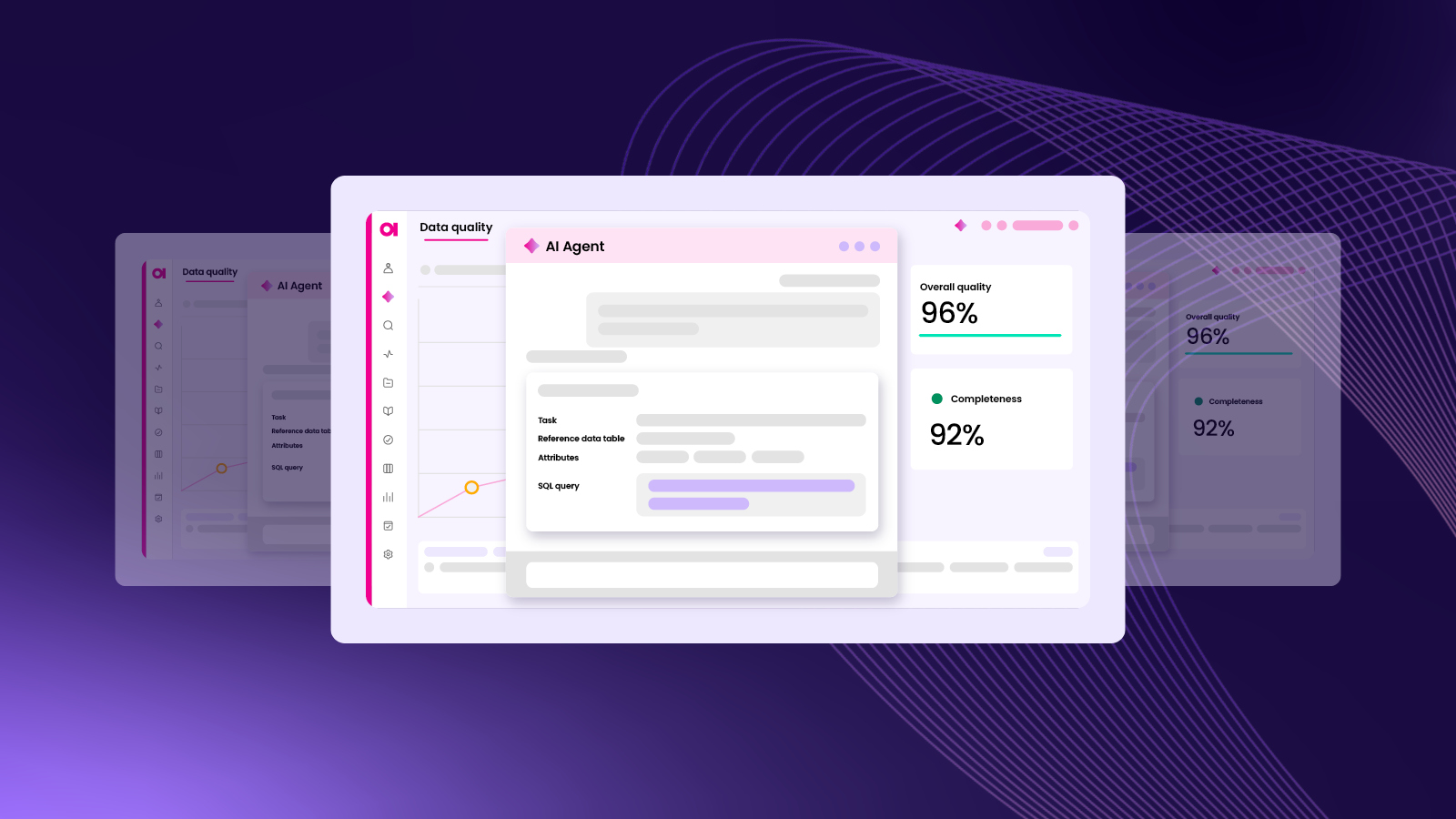Decoding the AI toolbox: Chatbots, assistant, copilots and agents explained

As we ride the wave of rapid technological innovation, it’s easy to feel swamped by a flurry of buzzwords. Terms like AI agent, copilot, assistant, and chatbot are often used interchangeably—yet they represent distinct capabilities and levels of autonomy.
For data professionals, these differences are more than semantics. Each tool offers unique strengths—and challenges. Whether you’re managing data workflows, optimizing pipelines, or scaling decision-making, understanding these tools can mean the difference between success and missed opportunity.
This guide demystifies the AI landscape, offering practical insights to help you select the right AI tool for your organization’s goals.
Understanding the core concepts
AI chatbots: Rules-based, text-first tools
AI chatbots are often the entry point into the world of artificial intelligence for many organizations. They’re designed to carry out specific, repetitive tasks by simulating human conversation—typically via text or voice. Traditional chatbots operate on scripted responses and decision trees, relying on rule-based systems to answer predictable queries, and are frequently used in customer support. An IBM report shows that chatbots can handle up to 80% of routine inquiries, cutting customer support costs by 30%.
Use cases for AI chatbots include:
- Customer support chatbots answering FAQs
- HR portals automating leave requests or interview scheduling
- Marketing bots recommending products or delivering promotions
Pros:
- Fast, cost-effective deployment
- Scalable for high-volume interactions
- Easy to implement across platforms
Challenges:
- Limited adaptability and flexibility
- Struggles with nuanced or open-ended conversations
- Requires well-structured scripts and data
- Weak contextual memory
AI assistants: Multitasking helpers
AI assistants go beyond traditional chatbots by delivering contextual, personalized interactions—drawing not only from real-time input but also from past learning and user behavior. They’re not just reactive—they interpret user input, retrieve information, and generate natural responses. Think Alexa or Google Assistant.
These tools are especially useful in environments where multitasking, information retrieval, and real-time responsiveness are critical. From managing team schedules to helping interpret analytics dashboards, AI assistants offer a productivity boost for data professionals and executives alike.
Use cases for AI assistants include:
- Smart scheduling and email drafting
- Real-time language translation
- Analyzing wearable or sensor data in health tech
Pros:
- Multi-modal and context-aware
- Handles a broad range of tasks
- Seamlessly integrates with various systems
Challenges:
- Sensitive to vaguely or poorly defined prompts
- Difficult integrating with legacy systems
- Needs diverse, high-quality training data
- Struggles with complex, multi-turn conversations
AI copilots: Domain-specific productivity partners
AI copilots are specialized digital collaborators designed to enhance human expertise and productivity within a domain. Backed by generative AI, they can anticipate user needs and streamline complex tasks. Unlike general-purpose AI assistants, AI copilots are tailored for roles such as software development, data analysis, or business operations—offering proactive, context-aware support. According to a recent McKinsey study, generative AI — a technology underpinning AI copilots — can help software developers complete coding tasks twice as fast, underscoring the significant impact of AI copilots in accelerating high-value work.
Copilots combine the power of ML, and LLMs with enterprise-specific data to generate insights, or automate repetitive tasks. Rather than merely responding to queries, copilots anticipate needs, suggest next steps, and help execute them—making them ideal for boosting productivity in high-impact workflows.
Use cases for AI copilots include:
- Auto-generating SQL queries
- Code assistance (e.g., GitHub Copilot)
- Drafting business or technical documents
Pros:
- Domain-specific intelligence
- Proactive, intelligent suggestions
- Synthesizes and generates relevant content
Challenges:
- Complex system integration required
- Needs continuous updates and fine-tuning
- Resource-intensive and data-governance dependent
AI agents: Autonomous digital workers
AI agents are autonomous digital workers engineered to independently execute complex tasks within dynamic environments. Unlike AI copilots that primarily assist and guide users, AI agents go a step further—they are designed to act on their own, taking initiative, making decisions, and seeing tasks through from start to finish with minimal human intervention.
These agents operate through a blend of ML, decision-making algorithms, and structured workflows. More advanced AI agents leverage LLMs with chain-of-thought prompting to reason through tasks, and can even coordinate with other agents to solve complex, multi-step problems collaboratively. Acting like digital junior employees, AI agents are capable of observing their environment, analyzing data, strategizing solutions, and executing actions—all while adapting continuously to new information and evolving objectives.
Thanks to their autonomous nature and learning capabilities, AI agents are particularly well-suited for complex domains that require strategic thinking and proactive engagement.
Use cases for AI agents include:
- Automating sales proposal creation
- Diagnostic support in healthcare
- Predictive maintenance in manufacturing
Pros:
- Acts autonomously and strategically
- Continuously learns from data and feedback
- Real-time decision-making across systems
Challenges:
- Complex governance and orchestration
- Scalability and infrastructure demands
- Ethical and compliance considerations
Comparing capabilities and complexity
Reactive vs proactive systems
One of the most telling ways to differentiate between AI chatbots, assistants, copilots, and agents is by how they respond to user input—that is, whether they’re reactive or proactive.
AI chatbots are typically reactive. They wait for a user prompt and respond with predefined or algorithmically generated replies. Their value lies in consistency and speed, but they rarely initiate conversations or predict user intent.
AI assistants, while still mostly reactive, exhibit early-stage proactive behavior. They can offer reminders or suggestions based on previous interactions—like suggesting meeting times based on calendar usage—but require structured prompts to function optimally.
AI copilots take proactivity to the next level. These systems anticipate user needs, analyze contextual information, and provide intelligent suggestions even before a user asks. For example, a data copilot might detect anomalies in a dataset and recommend a course of action.
AI agents are autonomous and proactive by design. They identify goals, break them into sub-tasks, and execute those tasks independently. In environments like data quality management, they might not just recommend correcting bad quality data—they’ll actually trigger the process to do so automatically.
Degree of autonomy
Autonomy refers to how independently an AI system can operate without human intervention. For data professionals, this directly impacts productivity, oversight needs, and the ability to scale operations.
AI chatbots: Operate under strict supervision. They follow scripts, rules, and workflows hardcoded by developers. They cannot perform new tasks or change behavior unless reprogrammed.
AI assistants: Somewhat more flexible. Thanks to machine learning, they can understand broader prompts and learn user preferences over time. However, they still need human validation and control for most tasks.
AI copilots: These systems can operate semi-autonomously. For example, in a data platform, a copilot might recommend data cleaning steps and even apply them, subject to user approval.
AI agents: Represent the pinnacle of autonomy. They can set goals, determine execution paths, act across systems, and adjust strategy based on real-time feedback—often with minimal or no supervision. Autonomous agents are increasingly used also in fields like logistics and cybersecurity, where decisions need to be made rapidly and at scale, without waiting for human input.
This tiered autonomy allows organizations to deploy different AI types based on risk tolerance, task complexity, and governance requirements.
Context awareness and retention
A core differentiator among these AI systems is how well they retain context and deliver personalized experiences, especially in multi-turn conversations or complex workflows.
AI chatbots: Context retention is limited. While some advanced bots can remember session data, they usually reset after each interaction. This can frustrate users who have to repeat themselves.
AI assistants: Retain some short-term and medium-term memory. They can follow a conversation for several turns and remember user preferences (like language or timezone), enabling modest personalization.
AI copilots: Equipped to handle long-form context across multiple tools and data sources. For instance, a copilot integrated with Git and JIRA could understand a developer’s past commits and tailor suggestions accordingly.
AI agents: Possess deep contextual awareness and operate with both short- and long-term memory. They can learn from past decisions, user preferences, and system feedback, enabling dynamic personalization over time.
Multimodal capabilities
One of the most exciting developments in modern AI is the rise of multimodal capabilities—the ability to process and respond to text, voice, images, video, and even structured data. The extent to which each AI type supports these modalities varies significantly.
AI chatbots: Most chatbots are still text-based, although some can process voice inputs via integrations. They’re usually restricted to one mode of interaction, which can limit their utility in environments that require more dynamic input formats.
AI assistants: These are inherently multimodal. From interpreting voice commands to parsing calendar invites, emails, or documents, assistants thrive in complex, cross-medium environments. For example, Google Assistant can transcribe speech, understand context, and display a relevant image or map—all in one interaction.
AI copilots: While their core interface is often text or command-line, copilots operate over a rich multimodal foundation. In data science and development environments, they might interpret code, documentation, dashboards, and visualizations to provide actionable suggestions. In creative domains, they can also generate images, charts, or audio content using embedded generative AI models.
AI agents: The most fully multimodal of the group, agents ingest and synthesize diverse data types to make complex decisions. For example, in healthcare, an agent could combine MRI images, lab test results, and patient history to assist with diagnosis or treatment planning.
| Criteria | AI Chatbot | AI Assistant | AI Copilot | AI Agent |
| Definition | Rule-based responder using predefined scripts | Contextual tool with NLP for multitasking | Domain-specific, proactive productivity enhancer | Fully autonomous system capable of executing complex tasks |
| Primary Interaction | Text-based Q&A | Text + Voice + Integration with tools | Command-line, prompts, data-aware | Multimodal, data-driven, autonomous |
| Level of Autonomy | Very low | Low to moderate | Moderate (semi-autonomous) | High (full autonomy) |
| Context Retention | Minimal, session-based | Short to mid-term memory | Long-term memory across tools | Deep context memory and self-learning capabilities |
| Proactivity | Reactive only | Limited proactive reminders | Anticipates needs, suggests actions | Sets own goals, acts and adapts autonomously |
| Multimodal Capabilities | Limited (mostly text, some voice) | Voice, text, visual inputs | Text, code, data visualizations | Text, voice, image, video, structured data |
| Integration Complexity | Simple | Moderate (legacy system challenge) | High (requires custom domain integration) | Very high (orchestration, governance, infra dependencies) |
| Ideal Use Cases | FAQs, navigation, simple support | Scheduling, task assistance, alerts | Data analysis, code generation, documentation | Fraud detection, ML automation, predictive maintenance |
| Strengths | Easy to deploy, scalable for basic tasks | Context-aware, multitasking | Domain expertise, productivity boost | Autonomous decision-making, continuous learning |
| Challenges | Script limitations, lacks flexibility | Poor with vague prompts, training data demands | Integration overhead, model fine-tuning needs | Scalability, ethical governance, infrastructure-heavy |
Different types of AI tools and their characteristics
Use cases in data management
For data professionals, AI isn’t just about automation—it’s about amplifying decision-making, accelerating productivity, and enhancing data governance. Here’s how each AI type maps to real-world use cases:
AI chatbots for data management
AI chatbots streamline repetitive and routine data tasks by offering instant, conversational access to structured knowledge and services. They can serve as the first line of interaction for users needing help with data queries or platform navigation, reducing reliance on support teams.
Use cases for AI chatbots in data management:
- Answering data glossary or catalog queries
- Assisting users in locating datasets or reports
- Fielding basic data quality issue reports
Example: A chatbot integrated with a data catalog can answer user questions like “What does the field customer_status mean?” or “Where can I find Q1 sales data?”
AI assistants for data management
AI assistants provide contextual help and task support by integrating with enterprise systems and leveraging user preferences. They offer an intelligent interface to help with day-to-day data-related tasks, enhancing productivity across departments.
Use cases for AI assistants in data management:
- Assisting analysts with smart report generation or dashboard navigation
- Offering proactive reminders to review data pipelines or perform validations
- Automating data-sharing workflows across teams
Example: A data assistant integrated with Slack and your BI tool could alert you when weekly metrics deviate from the norm and offer to prepare a briefing for your next team meeting.
AI copilots in data management
AI copilots augment skilled professionals by offering domain-specific insights and proactive recommendations. Built for collaborative environments, they bridge the gap between human expertise and automated execution in analytics, data engineering, and governance.
Use cases for AI copilots in data management:
- Auto-generating SQL queries based on plain-language prompts
- Suggesting data cleaning or transformation steps in pipelines
- Recommending schema changes based on usage patterns
Example: A copilot embedded in a data platform could detect anomalies in ingestion logs, suggest data validation rules, and even implement them with user approval.
AI agents in data management
AI agents bring autonomy to complex data workflows by independently executing tasks, learning from outcomes, and adapting strategies. They are ideal for organizations looking to scale operations with minimal human oversight while maintaining agility.
Use cases for AI agents in data management:
- Monitoring data quality across pipelines and remediating issues automatically
- Managing end-to-end data integration and synchronization across systems
- Triggering and evaluating ML model retraining based on performance degradation
Example: A data agent could continuously track data freshness metrics, detect lagging datasets, and autonomously launch ETL jobs or notify data stewards when thresholds are breached.
Emerging trends and the future of intelligent systems
The lines between AI chatbots, assistants, copilots, and agents are rapidly blurring. Hybrid models are emerging, combining contextual awareness, domain expertise, and proactive capabilities.
Key trends include:
- Personalized experiences driven by context retention
- Multimodal interactions across text, voice, and visuals
- Autonomous agents capable of executing complex tasks with minimal oversight
- Ethical design focused on transparency, trust, and responsible use
These innovations signal a future where AI tools are more integrated, intelligent, and impactful than ever.
Conclusion
The AI landscape is rapidly evolving—and for data-driven organizations, that’s both a challenge and a game-changing opportunity. AI chatbots, assistants, copilots, and agents are no longer buzzwords; they’re practical, powerful tools that can reshape how we work with data at every level.
Whether you’re aiming to streamline operations, empower business users, or automate complex workflows, the right AI tool can elevate your team’s potential. But success doesn’t come from choosing the flashiest technology—it comes from understanding your needs, preparing your data foundations, and designing with purpose.
To truly harness AI’s value, organizations must balance experimentation with strategy. That means investing in strong data governance, integration readiness, and cross-functional collaboration. The future isn’t man vs. machine—it’s human & machine, working in sync to unlock smarter decisions, faster execution, and scalable innovation.
Ready to see AI in action?
Curious how all of this works in the real world of data quality management? Discover how Ataccama is transforming data management with ONE AI—automating everything from data quality monitoring to intelligent issue resolution.
Anja Duricic
Anja is our Product Marketing Manager for ONE AI at Ataccama, with over 5 years in data, including her time at GoodData. She holds an MA from the University of Amsterdam and is passionate about the human experience, learning from real-life companies, and helping them with real-life needs.







